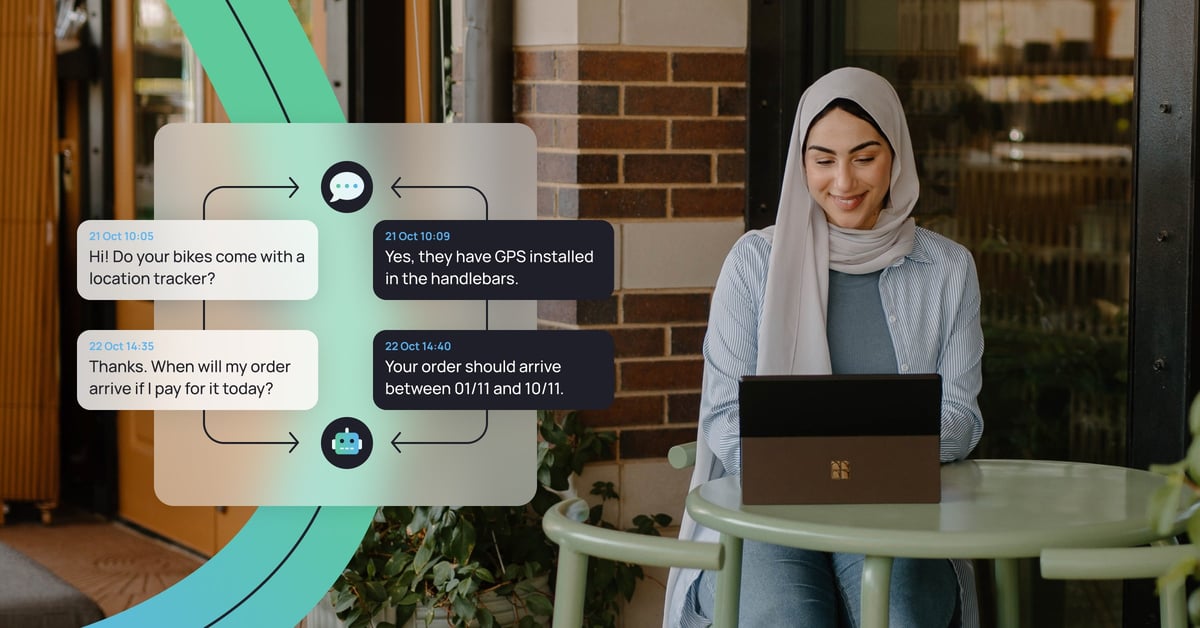The pre-async days
Let’s time travel to a typical day around 10 years ago: Imagine you’d invited a huge group of people over to watch the "Lost" series finale. On the night before the big day, you’re unable to log into your streaming platform. You try the customer support hotline, but their office hours are Monday through Friday, 9-5 pm, and it’s already 8:02 pm. You try again early the next morning while rushing to work. By the time you get put through to an agent, you’ve listened to the same Kenny G sax solo 48 times while on hold.
The agent asks for your customer number – which is tacked to your fridge at home. You sprint home after work, try the hotline a third time. But it’s too little too late: customer support is closed for the weekend, you can't login to Netflix, and your epic viewing party is ruined.
Same situation in 2022? A non-issue. You could have sent an email or even a Whatsapp message to customer support the moment you experienced login issues. You might have gotten an immediate message back asking for all the relevant identifying info needed. You could have taken your time to send that over, and been rewarded with a prompt automated reply including a password reset link. Problem solved – no Kenny G.
In tech terms, you would have benefited from automated ticket routing and pre-filling, an API integration, and a customer experience based on your availability, not the other way around.
Customer support technology today is designed to fit seamlessly into our daily lives. And one of the most advanced ways to do that is to offer support via what is called asynchronous messaging.
What is asynchronous messaging?
Asynchronous messaging describes communicating via staggered messages over time. Email, Slack, and Whatsapp are examples of asynchronous messaging channels, whereas a phone hotline or live chat are not.
At Ultimate, we specialize in optimizing customer support with AI automation – and that includes providing superior experiences across messaging channels. In fact, they're a core offering of our virtual agent platform. Which is why we're especially excited to take you through the brilliance that is asynchronous messaging, covering what it is and why it’s crucial for any forward-thinking support team.
Why is asynchronous messaging important in customer support?
- For customers: asynchronous messaging lets customers initiate, continue, and wrap up conversations whenever is most convenient for them, whether they’re waiting to get into the club at 2 a.m. or have time to kill as their Sunday brisket is braising in the oven.
- For your brand and support team: email is by far the most popular support channel (closely followed by digital messaging), with volumes growing 10% year on year, according to Zendesk. In terms of tackling support volumes, providing high quality async conversations is more of a must than a nice-to-have for any digitally minded business today.
Additionally, you may notice customers heading to your social media channels only when they’ve previously tried to contact your business in other ways. In our recent “Supercharged CX” video learning series, CX expert Shep Hyken points out the growing importance of streamlined customer communication via social media:
“I think we’re going to start seeing the digital experience become more and more important,” says Shep. “[I’m talking about] social media customer care, so people reaching out on channels like Twitter and Facebook.”
What we’re finding is that customers don’t go to [social media] channels first. If you take a look at many of the people who are going there, they’re going there because you didn’t answer their question on another channel.
- Shep Hyken, CX expert
This poses two challenges for your brand: The need to deal with particularly urgent or frustrated messages via social media that could damage your reputation, and the need to solve your customers’ problems at their very first point of contact, so they never have to resort to bombarding customer service across several channels in the first place.
More on async messaging
How automation helps optimize asynchronous messaging for your support team
Automation helps manage your asynchronous messaging channels in several ways:
- If you integrate your automation platform with your CRM, your support team can manage all of your channels in one place. They’ll have a bird’s eye view of every customer, with all context needed to dive right into their case, meaning that customers never have to repeat themselves (which is one of the biggest collective pet peeves among customers contacting support: 21% think not having to repeat themselves is the most significant aspect of a good CX).
- It also increases the likelihood that your customers will get their problem solved in one interaction with you, driving up First Contact Resolution rate (FCR) and customer satisfaction stats.
Find out more about FCR and other must-measure metrics for automation success
- A virtual agent can automatically label, route, and tag messages from asynchronous channels, and even solve some of them end-to-end using API integrations.
- Even if a conversation needs to be escalated, automated labeling, routing, and ticket creation could save your agents several minutes per ticket.
- A virtual agent can also organize your ticket backlog outside office hours. When your human agents come back in the next morning, they can systematically work through any open tickets the bot has created and begun to fill out.
Providing asynchronous support is a win-win situation for everyone involved: Customers don’t need to repeat themselves, they can initiate, continue, or wrap up conversations whenever it suits them, and have enough time to dig up any upfront info that will help human – or virtual – agents solve their issue as quickly as possible. Support teams benefit from more efficient management, agents are relieved of administrative tasks, and brands become more accessible to their current and potential customers.
